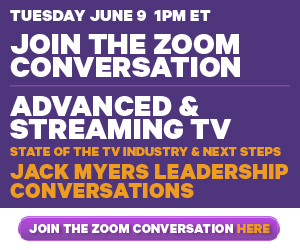Pennywise and Pound Foolish: The Almighty CPM

Resetting Marketing, Starting With the 2020 Upfront – Part 2. Another domain in which the idee fixe of lowest cost is ruinous is the CPM metric. Media agency contracts today have impressions guarantees imposed by the procurement departments of client advertisers. If the agency fails to meet its quota it is required to make up the difference by spending its own money.
Under those conditions, the media agency has no choice but to go for lowest CPMs first, and all other considerations second. Unlike your cancer doctor, they are ground down in fees, threatened by the risk of reaching into their own pockets, and still expected to perform like souls inspired.
The agencies know CPM doesn't translate into ROI in any linear way. The lowest CPM means you get the most impressions per dollar. But media agencies know that most of those impressions are piled up on a subset of viewers, the heavier media viewers, who are actually getting too many impressions for maximum brand benefit. The overexposed group actually get mad at the brand. Agencies know this but are forced by contract to carry out their orders.
Contracts must change as soon as they come up for renewal, when this pandemic is over. Or sooner. Peter Drucker established Management by Objectives (MBO). The media agency MBOs must be ROI and brand equity oriented, not oriented to amassing the most impressions. To achieve ROI and brand equity maximization the impressions themselves must be quality impressions not just any old impressions. To be quality impressions, not only must targeting be right, attentional impact per impression must also be maximized by the creative and its psychological resonance with both the viewer and the context. Only a handful of programs are known to have above average ad attention value for all ads. However, each individual ad when placed in programs that have psychological similarities to the ad (RMT DriverTagTM method) gains attention, branding, and sales impact, and this works across all ads and all programs, regardless of the program's own attention level. This works whether the brand has one ad or many.
The 2020 Upfront
There are many reasons why advertisers should want the upfront to continue not only this year but every year. Lower prices, performance guarantees now potentially including ROI-type outcomes, and much more.
The main reason why there is a holding back from the upfront this year is that no one knows how long the pandemic will last. However, upfront buys are typically cancellable by September, so brands can make the best decisions they can in the May-July timeframe and revise them through September without risk.
During this time of pause and reflect, I hope that media agencies are using the time to develop the best upfront plans they have ever devised for each of their clients. I offer some specific ideas about that in the Appendix below. Ideally, they would aggressively identify the specific programs that are best for each client, not limiting their thinking to rotations and Runs of Network (RONs). Then with clients they would conduct Zoom meetings with the networks to begin the upfront proactively, asking for perfect plans for each brand, and offering prices consistent with the agency contract guarantees, and requesting baked-in ROI third party measurement. If some agency does this ahead of other agencies, it stands to gain the best inventory and to achieve the first evidence of true differentiation.
OTT inventory is among the most desirable from an ROI standpoint according to the largest study of ad spend vs. sales ever conducted. Part of the envisioned proactive upfront start by media agency(ies) would be aimed to landgrab the most resonant environments for the client brands for the 12 months from October 2020-September 2021 in both OTT and linear TV. OTT inventory is scarce because most impressions still come through old fashioned tech, and then it is fragmented into tiny bits at the program level.
OTT in fact has not been sold much at the program level, it is almost entirely sold based on audiences without regard for context, so the projected agency move to the net envisions innovations in buying program specific OTT as well as program specific cable network (latter usually sold by daypart rotations). TRA showed that program specific buys have many times the ROI uplift of rotation buys resulting from skews to actual heavy swing purchasers (heavy category purchasers who buy the brand occasionally). Nielsen Catalina findings support RMT's contention that specific programs offer much higher ad:context resonance than rotations or RONs.
We hope that these recommendations will support the fresh thinking being given to many subjects by all we prisoners of Zenda. And that out of this considerably more than navel contemplation comes a new marketing with better outcomes for all parties.
In the Part 3 conclusion to this series, I get very specific about what I would do if I were still at an agency right now, to use the Upfront to maximum advantage for my clients, and to set a new, higher course for the business. Read Part 1 here
Click the social buttons to share this story with colleagues and friends.
The opinions expressed here are the author's views and do not necessarily represent the views of MediaVillage.com/MyersBizNet.



